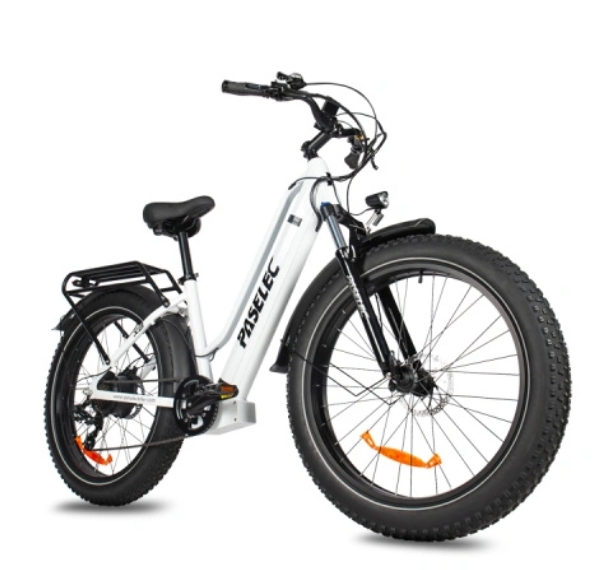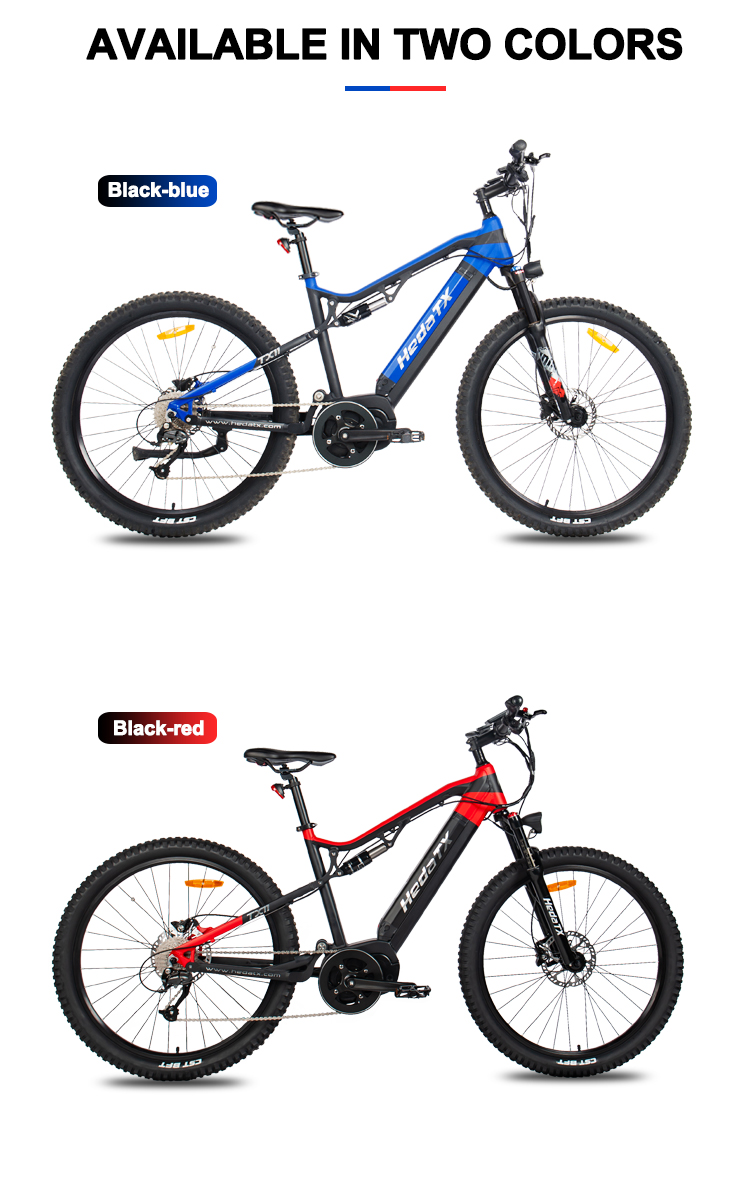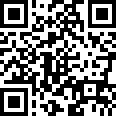
Privacy statement: Your privacy is very important to Us. Our company promises not to disclose your personal information to any external company with out your explicit permission.
News
Home > Company News > An article about bicycle accessories
2024-08-19

Frame system:
Frame: The main structure of the bicycle that carries the weight of the rider and the cargo and connects all the other components. The material, design and geometry of the frame have an important impact on the riding experience.
Transmission system:
Teeth disk (sprocket) : The set of gears at the front of the bicycle that are connected to the flywheel by a chain to convert the pedaling force into power.
Flywheel: The set of gears at the rear wheel of the bicycle that, in conjunction with the chain, adjusts the riding speed and power output by changing the gear ratio.
Chain: The metal chain that connects the disc to the flywheel and transmits power.
Transmission (dial, front and rear) : allows the rider to adjust the gear ratio according to road conditions and physical conditions to optimize riding efficiency.
Central shaft: The part connecting the tooth tray and the frame, supporting and transmitting the foot force.
Brake system:
Brake handle (handbrake) : The rider controls the brakes by gripping the brake handle tightly.
Brake line/tubing (for hydraulic brakes) : medium that transmits brake force.
Brake clamp/caliper: Mounted on the frame or front fork, it slows or stops the bike by rubbing the wheel rim or brake disc.
Brake disc (disc brake system) : In conjunction with the brake clamp, brake force is generated by friction.
Wheel system:
Wheels: Includes rims, tires, and spokes (or barrel shafts). The rim supports the tire, the spokes connect the rim to the hub, and the barrel shaft or quick removal system is used to secure the wheel to the frame or front fork.
Tires: Provide contact with the ground, affecting ride comfort, grip and rolling resistance.
Inner tube (not tubeless tire) : Installed inside the tire, inflated to support the shape of the tire and provide air pressure.
Control system:
Handlebars: The part that the rider holds and controls the direction.
Handlebar: A component that connects the handlebar to the frame and adjusts the height and Angle of the handlebar.
Head bowl group: The bearing assembly that connects the handlebar stand to the frame, allowing the handlebar to rotate flexibly.
Variable speed line/tubing (if the transmission is wire operated or hydraulic) : protects and guides the variable speed line or tubing
Comfort and Safety System:
Cushion (saddle) : provides support and comfort while riding.
Cushion rod (seat tube) : connects the cushion to the frame and adjusts the height of the cushion.
Foot: The part the rider steps on, which is divided into flat step and lock step.
Fender: prevents mud from splashing onto the rider.
Headlights (front and rear) : Improve visibility at night or in low light environments.
Bell/horn: used to alert other road users.
Other accessories:
Kettle holder and kettle: Used to carry drinking water.
Cycling backpacks/Fanny packs: Carry personal items.
Riding shoes/locking shoes: improve treadle efficiency and comfort (especially when used with locking shoes).
Cycling clothing: Provides comfort and reduces wind resistance.
1. Frame
Features: The frame is the main structure of the bicycle, usually made of aluminum alloy, carbon fiber and other lightweight high-strength materials, with excellent rigidity and durability. The frame is designed with riding posture, comfort and aerodynamic performance in mind.
Function: Carrying the weight of riders and goods, connecting all other components, is the foundation and core of the bicycle.
2. Tires
Features: Tires are divided into inner tires and outer tires, and the outer tires are usually designed with different patterns to adapt to different riding roads. Modern bicycles also appear tubeless vacuum tires with lower rolling resistance and higher safety.
Function: Provide contact with the ground, transmit power, affect riding comfort, grip and rolling resistance.
2. Transmission system (dental disc, flywheel, chain)
Features: The transmission system is composed of a tooth disc, a flywheel and a chain, and the riding speed is adjusted through different gear combinations. The modern drivetrain also incorporates a transmission to improve riding flexibility and efficiency.
Function: The pedal force of the rider is transformed into the power of the bicycle forward, and the gear ratio is changed to adapt to different riding road conditions and physical conditions.
4. Brake system
Features: Brake system includes brake handle, brake line (or oil pipe), brake clamp (or caliper) and other components. Modern bicycles mostly use hydraulic disc brake system, which has higher braking performance and stability.
Function: Control the speed and parking during the ride to ensure the safety of the ride.
5. Control system (handlebars, handlebars, front bowl)
Features: The control system is composed of handlebars, handlebars and front bowls, which is responsible for controlling the direction and stability of the bike. Handlebars are designed with ergonomics and riding posture in mind for comfort.
Function: To provide riders with the ability to control the bike, to ensure the stability and direction of the ride.
6. Comfort and safety system (seat cushion, pedal, fender, lights, etc.)
Features: These accessories are designed to improve riding comfort and safety. Cushions come in different shapes and materials to suit different riding needs and body types; The pedals are divided into two types: flat pedals and lock pedals. Fenders are used to prevent mud from splashing onto the rider; Headlights improve visibility at night or in low light.
Function: Improve the comfort and safety of riding, reduce fatigue and accident risk during riding.

Preparatory phase
Material preparation:
Bicycle frame: Select the right type of frame (such as mountain bike, road bike, city bike, etc.) and material (such as aluminum alloy, carbon fiber, titanium alloy, etc.) according to riding needs and budget.
Wheels: Choose the wheels according to the type of bike (e.g., 26 - or 29-inch wheels for mountain bikes, 700C wheels for road bikes), and make sure the tires, wheels, and axles are in good condition.
Handlebars, seats and other parts: Make sure the size and model of these parts match the frame.
Tools required:
Wrench: Used to tighten or loosen fasteners such as nuts and bolts.
Screwdriver: Used to tighten or loosen screws.
Hex wrench: Used to adjust brake, transmission and other components.
Rubber hammer: Used to knock components such as bearings and shafts to avoid damage to components caused by metal mallets.
Lubricants, screws, washers and other accessories: Ensure that the accessories required during the assembly process are complete.
Assembly procedure
Install five front parts:
Using a wooden board, punch the upper and lower cups onto the frame.
Hit the top of the wave onto the front fork and apply some butter.
Attach the front fork to the frame, taking care not to reverse the direction of the wave ring.
Wheel installation:
Insert the front and rear axles respectively into the axle holes of the frame and the front fork, and fix them with nuts.
Adjust the wheel position to ensure that the wheel is parallel to the frame and the front fork, and the two sides are equally spaced.
Tighten the nut, but not too tight to avoid damaging the bearing.
Inflate to proper pressure and check tyre condition.
Install handles and seats:
Fix the handle to the frame and adjust the Angle and distance of the handle.
Install control components such as brake handle and dial, and adjust their position and tightness.
Fix the seat to the frame, adjust the position and height of the seat, and the tilt of the seat.
Install the drive system:
Clean the chain to remove oil and impurities.
Install the chain, making sure the inside of it fits the tooth slots of the guide wheel and flywheel.
Adjust the tightness of the chain to ensure smooth operation of the chain on the guide wheel and flywheel.
Install the transmission and connect the transmission wire.
Adjust the limit screws and trimmer screws of the transmission to ensure that the transmission accurately controls the chain position on the different flywheels.
Debugging brake system:
Check whether the brake lines, brake pads and other parts are seriously worn, and replace them if necessary.
Install the brake device to ensure that the brake pads fit tightly to the wheels.
Adjust the tightness of the brake line to ensure that the brake is sensitive and effective.
Test the braking system to ensure a quick stop in an emergency.
Other debugging:
Adjust the handlebar height and Angle to a comfortable position.
Check the steering flexibility to ensure that the handlebars rotate flexibly without stalling or abnormal noise.
Riding on a flat surface tests the overall performance and stability of the bike.

Share to:
Send Inquiry

Mr. Leo
Tel:+86-0757-81092607
Fax:+86-0757-81092967
Mobile Phone:8617718868618
Email:hedatx2023@hotmail.com
Address:6/F, No.18 South, Wujia Development Zone, Xilian, Danzao Town, Nanhai District, Foshan, Guangdong
Related Products List
Mobile Site


Privacy statement: Your privacy is very important to Us. Our company promises not to disclose your personal information to any external company with out your explicit permission.

Fill in more information so that we can get in touch with you faster
Privacy statement: Your privacy is very important to Us. Our company promises not to disclose your personal information to any external company with out your explicit permission.